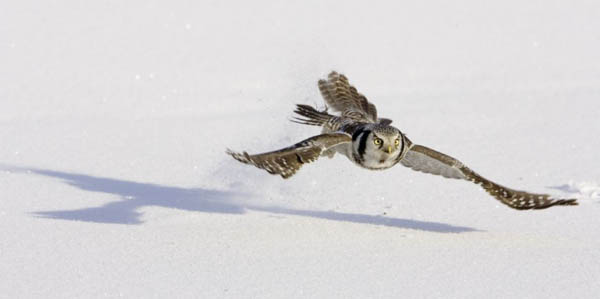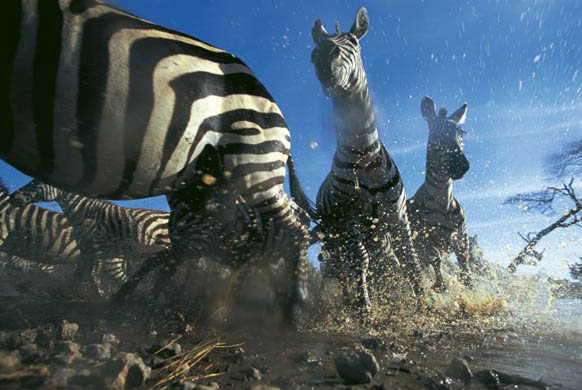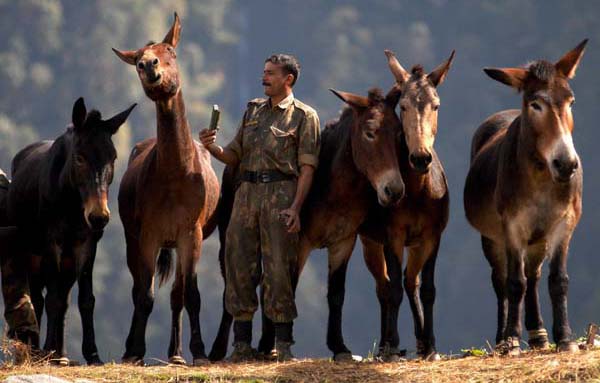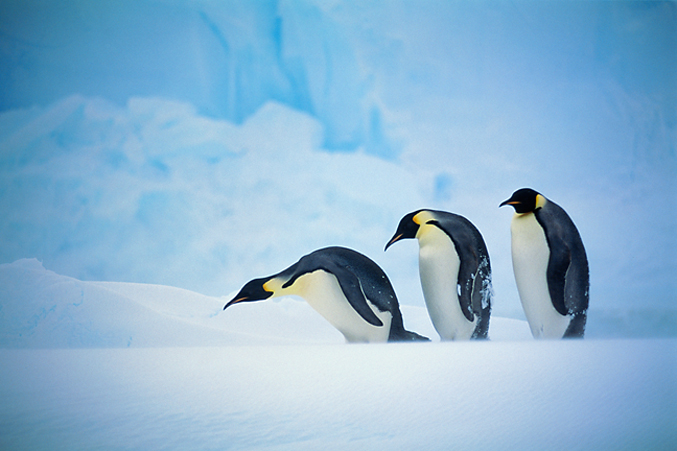Their faces were more impressive than lovable in the air.
brown booby (in about the same region)

(sorry for the blurred photo)
There are some really good wildlife photos ...

... named as the winners of
Shell Wildlife Photographer of the Year awards at the Natural History Museum, in London.
Above is from today's
Guardian (pages 16 & 17, like the two example below), since not online yet on the museum's website.
satt, Thanks for the brown booby. Dem boids can fly.
Thanks, Walter, for the photos and the link. I looked at all the photos. Great stuff.
Saltwater crocodiles, mother and baby. This photo is captioned, "The Safest Place on Earth."

Sailfish:

Vancouver Island marmot (one of the rarest mammals on the planet):

Eastern chipmunk:

Two more from Walter's link.
Snow owl:

Zebras:

box jellyfish

I would be out of the water if I had to see this.
Thanks for the invertebrate, satt. The ocean is filled with amazing (and scary) stuff. Here are a couple more.
Sea cucumber:

Sea worm:

This is for Diane. A long time ago she said on this thread that she thought that mountain lions (pumas, cougars) have the most beautiful faces of all the large cats.

Man-faced beetle (aka stink bug):

from today's group of photos around the globe in the Guardian,

description and credit -
Jang, India: An army groom tends to mules that provide logistical support to soldiers deployed at high altitude
Photograph: STR/EPA
osso, Love dem muley faces. Thanks, kid.
King penguins:

Emperor penguins (not the same species, honest):

Roberta wrote:This is for Diane. A long time ago she said on this thread that she thought that mountain lions (pumas, cougars) have the most beautiful faces of all the large cats.

The lower picture is of the Florida panther, a subspecies or geographic race of the cougar. Panthers are now limited to about 60 or so individuals in southern Florida. The morphology differs somewhat, the panther having a longer face and larger feet than the western cougar.

Thanks, c.i., for the lion, sleeping owl, and hyena.
Thanks, coluber, for the wonderful picture of the Florida panther. I read some time back that western cats had been brought in for breeding, thus making most of the remaining population hybrids. Do you know whether this is true? That is a wonderful face.
Yes, that's true, Roberta. Because of the small gene pool, the Florida panthers were showing physical problems attributed to inbreeding. Breeding with another subspecies dilutes the Florida panther genes, and I don't know about the wisdom of bringing in the western race.
Years ago I worked for Everglades Wonder Gardens, a private zoo in Bonita Springs, Fla., owned by Lester Piper, a grizzled old guy who came down there in the 1930s with his brother Bill. They collected a lot of the animals for the zoo. Lester was one of the few people to breed Florida panthers. Some conservation people convinced him to allow them to turn one of his panthers loose in the everglades to improve the gene pool. A short time later a panther skin turned up on some guy's property presumedly Lester's cat.
It was best to avoid bringing up the term conservation around Lester, because it invariably precipitated a gradually increasing rage in him accompanied by a bright red face and popping veins.
Thanks for the info and the insight, coluber. I have on occasion resembled Lester's redness and vein poppiness when I hear about things like this.
Rhinoceros viper:

The scale coloration of this animal is truly remarkable. Sorry I couldn't find a picture that showed the head and the scales together.

Rhinoceros beetle (one of the largest insects):

Black rhinoceros:
